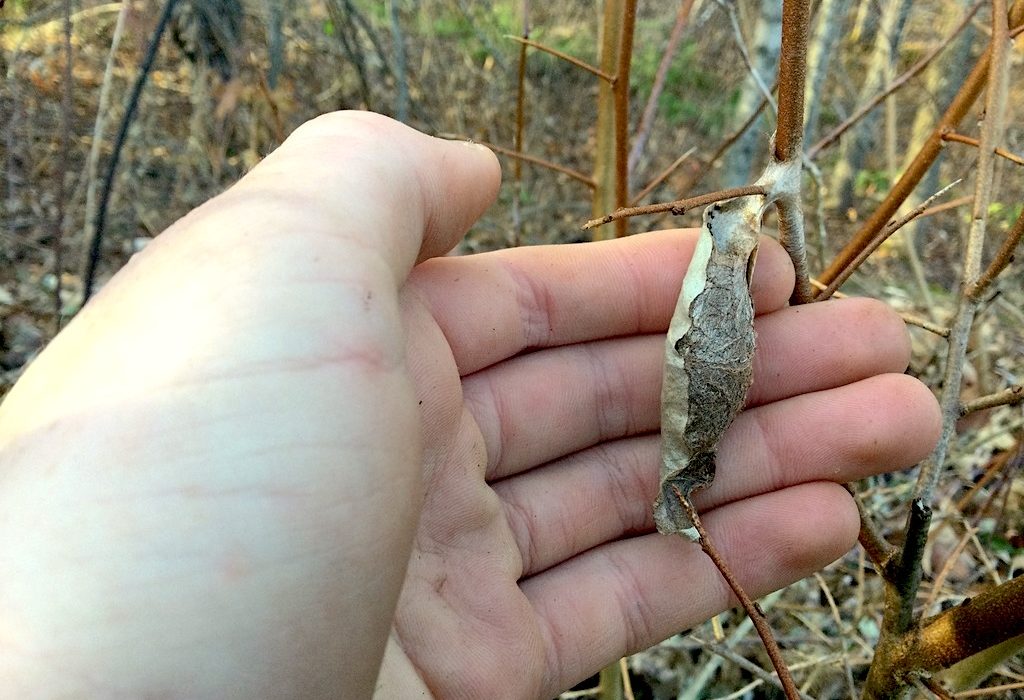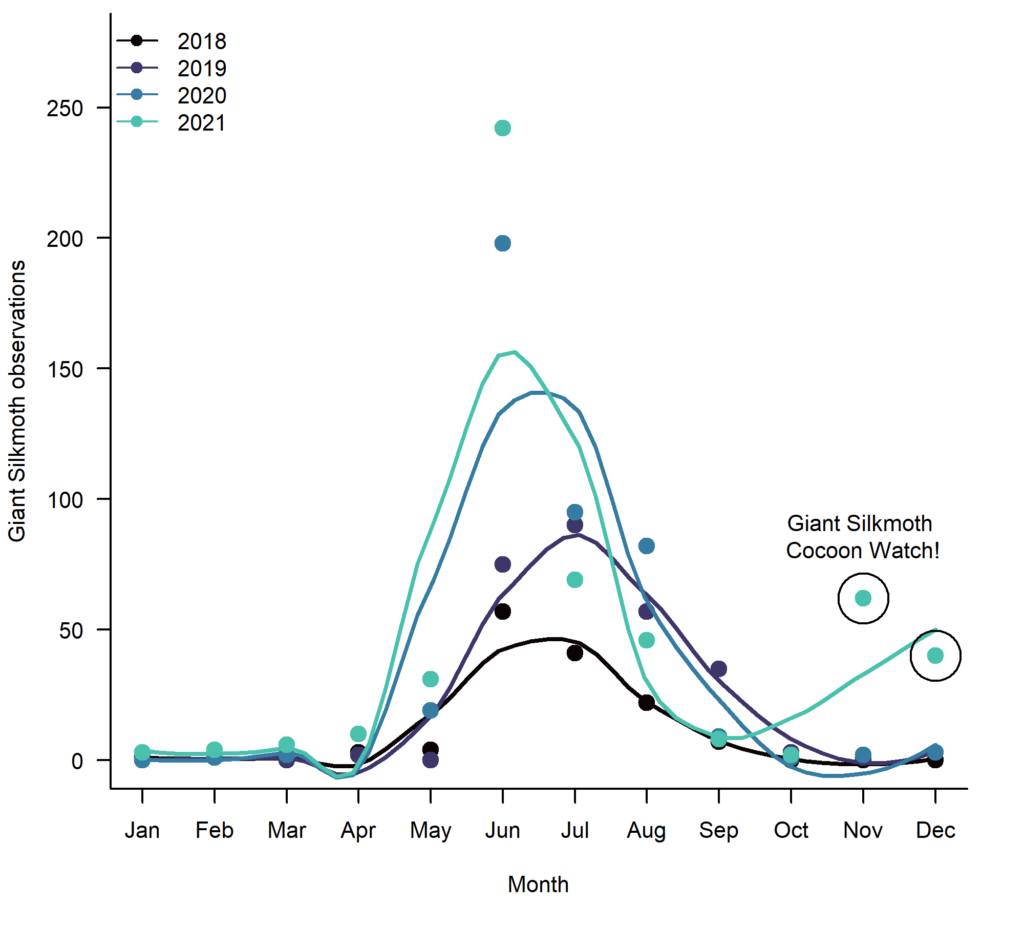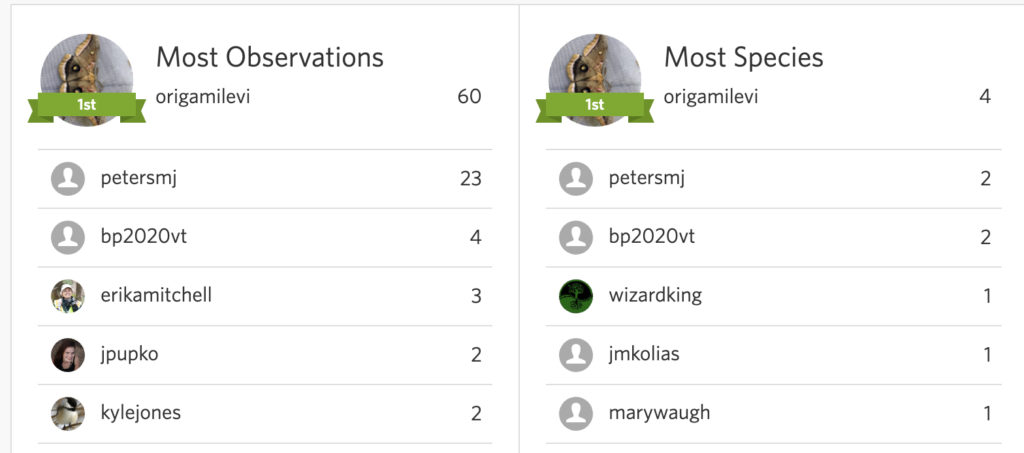Finding adult giant silkmoths in the summer can be a memorable experience – they’re large and beautiful. Like many butterflies and moths, the adults survive for only a short time, generally, only a few days, just long enough to find a mate, and start the next generation. Once their eggs hatch, they spend a few weeks as caterpillars then pupate and overwinter in their cocoons. Finding a well-hidden and camouflage cocoon is just as thrilling!
Our first, annual Giant Silkmoth Cocoon Watch was a huge success! Over 100 total observations of silkmoth cocoons from four species were submitted to our iNaturalist project during November and December. That’s a 2,000% increase over the same period in 2020!
These observations will help us understand where these iconic, declining species are within Vermont. If you found one, be sure to keep an eye out this spring and document if the adult moth (or a parasite) emerges, and of course, add your observation to iNaturalist!
Vermont has five known species of giant silk moths: Cecropia Silkmoth (Hyalophora cecropia), Promethea Silkmoth (Callosamia promethea), Polyphemus Silkmoth (Antheraea polyphemus), Luna Moth. Another species only recently found in Vermont is the Columbia Silkmoth (Hyalophora columbia).
The truth is that like many of the moths of Vermont, we know little about the locations and extent of Giant Silk Moth populations. Populations in the Northeast have perhaps been in decline for decades. One possible explanation is dispersal of the “natural” insecticide Bacillus thuringiensis (Bt) against LD moths (Lymantria dispar). It most likely harms native insects as well. A study at the University of Massachusetts-Amherst seems to have found another culprit. Researchers there discovered that an introduced parasitic fly, Compsilura concinnata, attacks and kills giant silk moth caterpillars. The fly was repeatedly introduced from 1906 to 1986 to control some 13 pest species. Concerns about the effect on native moths by this fly were expressed as early as 1919.
Thank you to everyone that submitted observations and/or identified observations ot help us learn more about these iconic moths.










